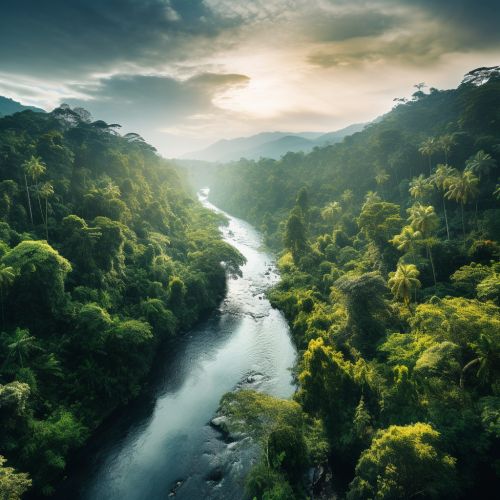Tapajós River
Geography
The Tapajós River is a major waterway in Brazil, flowing through the states of Mato Grosso and Pará. It originates from the confluence of the Juruena River and the Teles Pires River, and flows for approximately 800 kilometers before joining the Amazon River near the city of Santarém.


The Tapajós River basin is characterized by a diverse range of ecosystems, including tropical rainforests, savannas, and wetlands. The river itself is home to a rich array of aquatic life, including many species of fish, reptiles, and amphibians.
Hydrology
The Tapajós River plays a crucial role in the hydrological cycle of the Amazon Basin. It contributes significantly to the overall volume of the Amazon River, and its waters are known for their clear, blue-green color, which contrasts with the muddy waters of the Amazon. The river's flow is influenced by seasonal rainfall patterns, with the highest water levels typically occurring during the rainy season from December to May.
Biodiversity
The Tapajós River basin is one of the most biodiverse regions in the world. It is home to a vast array of plant and animal species, many of which are endemic to the region. This includes a number of threatened and endangered species, such as the Amazon River Dolphin and the Giant Otter.
The river's aquatic ecosystems are particularly rich in fish species, with over 300 species recorded. This includes a number of commercially important species, such as the Pirarucu and the Tambaqui, which are vital to local fishing industries.
Human Settlement and Impact
The Tapajós River has been a vital lifeline for human settlements for centuries. Indigenous communities such as the Munduruku and the Kayapo have lived along the river for generations, relying on its resources for their livelihoods.
In recent decades, the Tapajós River basin has been subject to increasing pressures from human activities. Deforestation, mining, and dam construction have all had significant impacts on the river's ecosystems and the communities that depend on them. Efforts are ongoing to balance the needs of development with the preservation of the river's unique biodiversity and the rights of its indigenous communities.
Conservation Efforts
Given the ecological importance of the Tapajós River, a number of conservation initiatives have been established to protect its ecosystems and biodiversity. These include the creation of protected areas and reserves, as well as efforts to promote sustainable land use practices.
However, conservation efforts face significant challenges, including enforcement issues and conflicts with development interests. Continued research and monitoring are crucial to understanding the impacts of human activities on the river's ecosystems and to inform effective conservation strategies.
